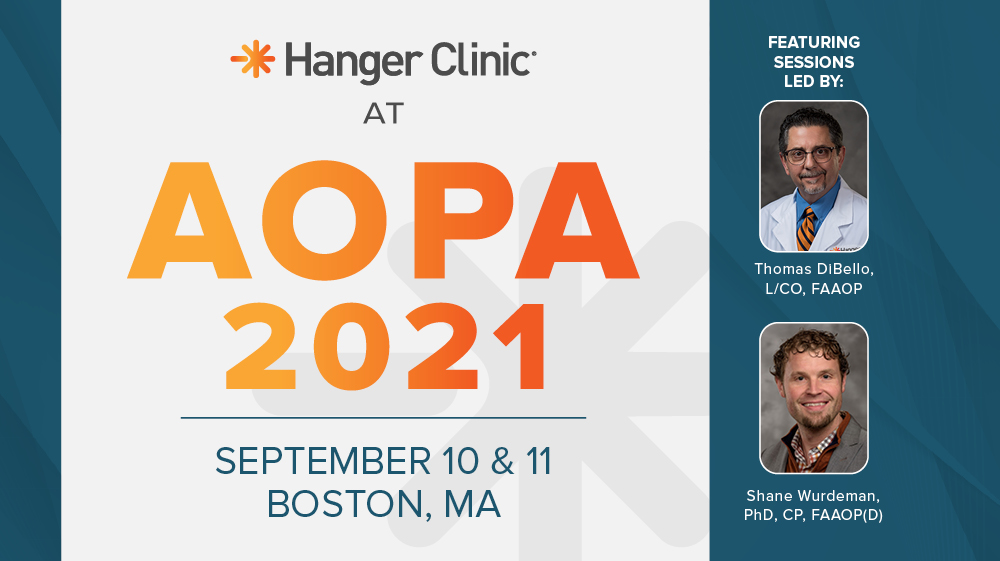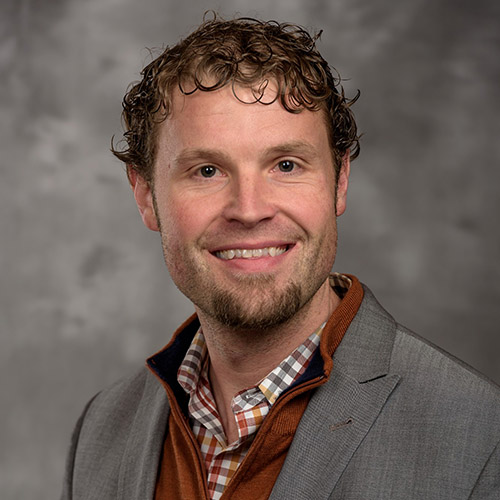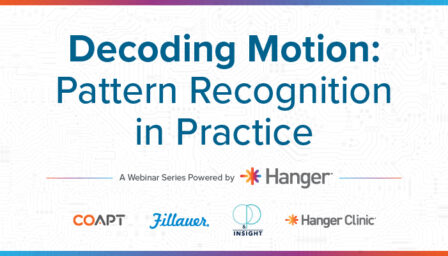Hanger Clinic at AOPA 2021

Date and Time
Don’t miss the chance to rebuild, reconnect, and reunite with Hanger Clinic researchers, specialists, and expert clinicians at the 2021 American Orthotics & Prosthetics Association (AOPA) National Assembly in Boston. Taking place from September 9-11, 2021, AOPA is the largest meeting for the orthotic, prosthetic, and pedorthic profession, empowering thousands of attendees to expand their knowledge, grow their presence, and advance their skills.
Featured Hanger Clinic Sessions
Friday, September 10
11:09 – 11:24 a.m.
Factors Associated with Health-Related Quality of Life in People Living with Partial Foot or Transtibial Amputation (C1C)
Shane Wurdeman, PhD, CP, FAAOP(D)
11:26 – 11:41 a.m.
Utilization of Orthotic and Assistive Devices: Preliminary Results from a Cross-Sectional Survey of Lower Limb Orthosis Users in the United States (C1D)
Shane Wurdeman, PhD, CP, FAAOP(D)
Saturday, September 11, 2021
3 – 4:30 p.m.
Orthotic Symposium: Advancements in AFO Technology (C11)
Thomas DiBello, LO, CO, FAAOP Ted Friedman, CO, Andreas Kannenberg, MD (GER), PhD, Géza Kogler, PhD, CO, Nicholas LeCursi, CO, Thomas Schmalz, PhD, Gerald Stark, PhD, MSEM, CPO/L, FAAOP(D)
Featured Hanger Clinic Speakers

Shane Wurdeman, PhD, CP, FAAOP(D)
Director, Clinical Research, Hanger Clinic
Shane has co-authored more than 40 peer-reviewed manuscripts, published 3 book chapters, and presented more than 100 conference abstracts within the field of orthotic and prosthetic rehabilitation.

Tom DiBello, L/CO, FAAOP
Director, Clinical & Scientific Affairs, Hanger Clinic
Related Events

July 30, 2025
From Code to Care: Expanding Access to Pattern Recognition in Upper Limb Prosthetics
This session provides critical insights into Healthcare Common Procedure Coding System L6700, a newly approved reimbursement code representing the integration of myoelectric pattern recognition within an upper limb prosthesis.

August 27, 2025
Foundations of Pattern Recognition: Principles, Evidence, and Patient Candidacy
This course introduces therapists to emerging care strategies for individuals following upper limb amputation, with a focus on integrating pattern recognition technology into rehabilitation.